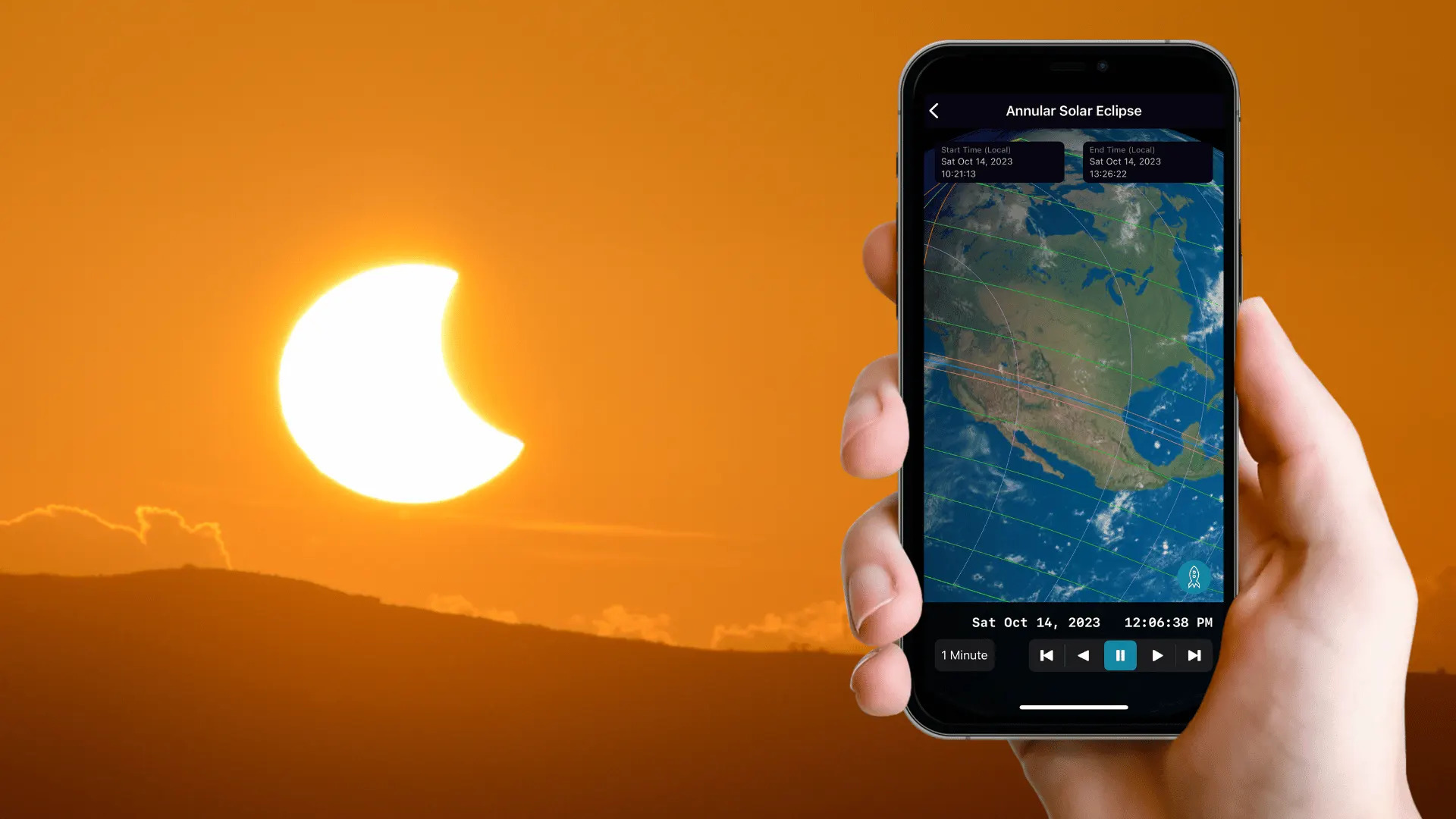Hold the annular solar eclipse in your hand with new 'One Eclipse' app from Astronomers Without Borders
An annular solar eclipse will be visible across the Americas on Oct. 14.

Non-profit organization Astronomers Without Borders (AWB) brings the wonder of the solar eclipse into the palm of your hands with a new eclipse app for iOS devices.
"One Eclipse" is designed to enhance the experience of solar eclipses for people of all ages and backgrounds.
Developed as part of a partnership between AWB and Simulation Curriculum Corp., the app features the cutting-edge capabilities of planetarium software SkySafari 7 to give users a front-row experience of the 2023 annular solar eclipse.
Related: How long will the annular solar eclipse last on Oct. 14?
With the interactive eclipse map, users are able to pinpoint the perfect viewing spot for observing the upcoming eclipse and the handy countdown timer lets you see the exact moment when you can expect to experience the moon's shadow.
The eclipse simulator lets you see what the eclipse will look like from any location on Earth, from start to finish. If you're as passionate about eclipses and astronomy in general, you can also share your eclipse-viewing experience with AWB's celestial storytelling community and help inspire other like-minded individuals to get involved.
AWB is a non-profit organization with a membership that spans 145 countries. It is dedicated to spreading the wonder of astronomy worldwide.
Get the Space.com Newsletter
Breaking space news, the latest updates on rocket launches, skywatching events and more!
"Our vision is a global community that appreciates, studies, and shares the wonders of the universe, to broaden perspective, transcend borders, and improve lives." according to AWB's official website.
You can help AWB with their endeavors as 50% of every purchase of "One Eclipse" goes to support AWB in their STEM outreach projects designed to help underserved communities around the world and their highly successful eclipse glasses recycling program.
The annular solar eclipse on Oct. 14 will be visible across the Americas, spanning 10 countries in total. Only viewers within the path of annularity which is 118 to 137 miles (190 to 220 kilometers) wide will see the full "ring of fire" effect when the moon partially obscures the sun's disk, leaving a thin ring of light around it. If you're not able to watch the event in person you can watch the annular solar eclipse online from one of the various free livestreams.
Related: Which U.S. states will October's 'ring of fire' solar eclipse be visible from?
As with all solar viewing ventures remember to take necessary precautions and to NEVER look at the sun directly. To safely view this solar eclipse you must use solar filters at all times. Whether your location will experience a partial solar eclipse or an annular solar eclipse, the dangers are the same. Observers will need to wear solar eclipse glasses, and cameras, telescopes and binoculars must have solar filters placed in front of their lenses at all times.
Our how to observe the sun safely guide tells you everything you need to know about safe solar observations.
Join our Space Forums to keep talking space on the latest missions, night sky and more! And if you have a news tip, correction or comment, let us know at: community@space.com.

Daisy Dobrijevic joined Space.com in February 2022 having previously worked for our sister publication All About Space magazine as a staff writer. Before joining us, Daisy completed an editorial internship with the BBC Sky at Night Magazine and worked at the National Space Centre in Leicester, U.K., where she enjoyed communicating space science to the public. In 2021, Daisy completed a PhD in plant physiology and also holds a Master's in Environmental Science, she is currently based in Nottingham, U.K. Daisy is passionate about all things space, with a penchant for solar activity and space weather. She has a strong interest in astrotourism and loves nothing more than a good northern lights chase!









